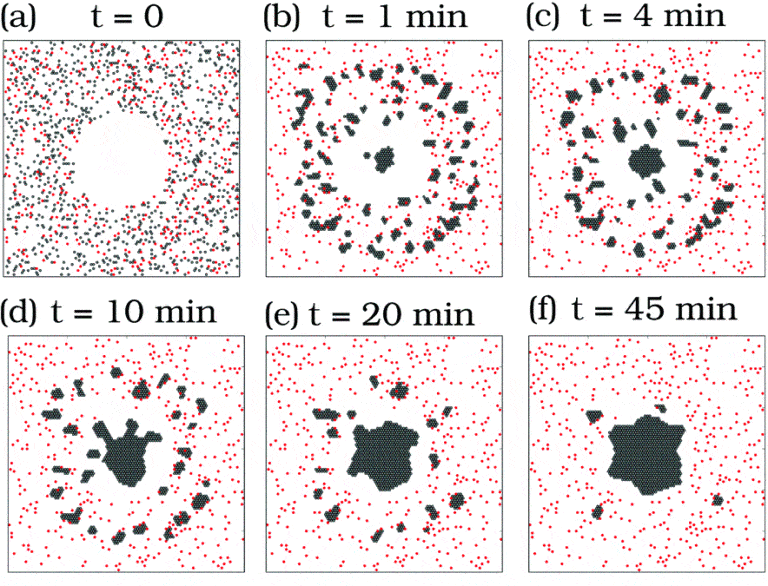Complex systems, simple principles and the audacity of a physicist

20 years ago, the physicist Prof. Oded Fargo, head of the biomedical engineering department at Ben-Gurion University of the Negev, began working in the field of biophysics. Since then he has been dealing with the "seam line" between physics and biology. This unique position allows him to observe biological issues "from the side", and to integrate physical tools in the study of biological membranes through computer simulations.
Life is not an Xbox
"Computer simulations have become in the last 20 years a tool of enormous importance," says Prof. Fargo. "This is especially true in very complex systems, such as biological systems. Our research focuses on membranes, the 'wraps' that enclose the entire cell and certain areas within it. Such a membrane is a shell made of a fatty layer, similar to soap bubbles. But compared to the soap bubbles floating in the air, the biological membranes are surrounded by an aqueous solution; And compared to the soap bubble, whose chemical composition is very simple, a biological membrane contains a huge number of different components. It is impossible to describe such a complex system with mathematical equations - nor with a computer simulation."
Computer simulation of biological membranes, and of other complex biological systems, is an impossible task for two reasons. First, we still do not know enough about the components of the system and the forces acting between them; And secondly, this requires much greater computing power than we have at our disposal. "The thought that we can write software like Xbox that faithfully simulates the dynamics in a cell is naive," says Prof. Fargo. "The complexity of systems like biological cells is greater by several orders of magnitude."
If it is impossible to create a computer simulation that faithfully describes this complex system, perhaps it is possible to create a simulation that describes it in a less faithful way - that is, in a very simplified way. "It takes the 'audacity' of a physicist," says Prof. Fargo with a smile, "to take a protein that consists of hundreds of atoms and represent it as a single unit, and instead of all the types of lipids that are in the cell membrane, settle for two or three - a level of complexity that our computer systems can handle. If we try to represent the true complexity of the membrane, our computing power is sufficient to represent only a tiny section, but if we simplify it, we can represent a much larger piece of membrane."
Simplification, of course, has a price: the results of a simulation depend on the information that is fed into it. When using a very simplified model, the conclusions that can be drawn from it are necessarily limited.
The holy grail of physicists
Prof. Fargo's current research, which won a grant from the National Science Foundation, combines interesting biophysical questions with medical application. With the help of research student Nadiv Dahran, researcher Prof. Frego discovered the contact area between a white blood cell and a bacterium that it captures and attaches to. This contact area is called an "immunological synapse". The adhesion of the cells occurs thanks to receptors on the surface of the white blood cell, which recognize certain molecules on the surface of the bacterium.
These receptors belong to two main families: one forms relatively long bonds and the other forms shorter bonds. In the area of contact between the two cells, the short bonds are in the center and the long bonds surround them. Two factors are responsible for this organization: protein motors that push the short bonds to the center, as well as spontaneous migration of the short bonds to the central region under the influence of elastic forces that develop in the membrane, while creating a separation between them and the long bonds. The research shows that the two factors, as well as the mutual influence between them, contribute to the formation of the typical model. The duration of the process is about 30 minutes - too long to be able to simulate it with traditional tools. In this study, a simplified simulation of it was made.
Another study deals with the organization of a membrane that contains two components: lipids carrying polymeric "hairs" and "naked" lipids. When these components organize into a membrane bubble, the "hairy" lipids are on the outside and the "naked" lipids are on the inside. That is, an asymmetric membrane is obtained. What are the factors responsible for this asymmetric organization? And would a simplified model of this system yield the same predictions as a model at the level of detail of single atoms?
"Biologists strive for an accurate and detailed description of reality," says Prof. Fargo, "while physicists strive to describe systems based on two or three basic principles. A description as abstract as possible, minimalistic, is the holy grail of physicists. Biologists are skeptical of this approach; But in my eyes, this is a gift that physics can give to biology."
Life itself:
Prof. Fargo has been interested in rock and indie music since his youth. If he wasn't a scientist, he would want to be a music editor on the radio.
More of the topic in Hayadan:
